Summary
- The textile industry is responsible for manufacturing fashion products for consumers.
- Despite generating millions of jobs and clothing, it also faces several challenges.
- Create using the best of technology. Try Audaces360’s multi-solution for free!
The textile industry relies on a wide variety of raw materials to provide the market and clothing companies with diverse fiber solutions.
Understanding the main types of fabrics and how each material behaves is crucial for clothing industry professionals. This knowledge helps to choose the most suitable weave for each garment type.
Learn about the challenges and opportunities facing the textile industry in this exclusive content.
Enjoy your reading!
Sumário
What is the importance of the textile industry?
The textile industry plays a vital role in society and the environment, impacting various aspects of modern life.
It generates employment, influencing culture, and providing access to clothing, while also facing challenges related to sustainability.
Learn more about the impact of the textile industry:
Impact on society
The textile industry is a major source of employment around the world, providing job opportunities for a wide range of people, from farmers who cultivate natural fibers to workers in factories and retail stores.
It also contributes significantly to the global economy with substantial revenue, promoting economic development in many countries.
Impact on the environment
There is a growing recognition of the need for more sustainable practices in the textile industry.
Many companies are adopting more sustainable technologies and processes, including the use of organic, recycled, and biodegradable materials, as well as the implementation of more resource-efficient production processes.
The textile industry also plays a role in raising environmental awareness and changing consumer behavior.

What does the textile industry produce?
The textile industry is vast and complex and encompasses a wide range of activities, from the production of raw materials to the manufacturing of finished goods.
Some of the main products that are manufactured in the textile industry include:
Fabrics
A wide variety of fabrics are produced for different purposes, such as cotton, polyester, nylon, silk, linen, wool, and others.
Clothing
All types of clothing, including t-shirts, pants, dresses, jackets, underwear, and uniforms.
Technical fabrics
Fabrics that are developed for specific applications, such as waterproof, fireproof, and antibacterial fabrics.
Fashion and design products
Bags, scarves, ties, hats, and other fashion accessories.
Upholstery fabrics
Fabrics that are used in the upholstery of furniture, such as sofas, chairs, and armchairs.
Shoe fabrics
Fabrics that are used in the manufacture of footwear, including sneakers, casual shoes, and boots.
What is the history of the textile industry?
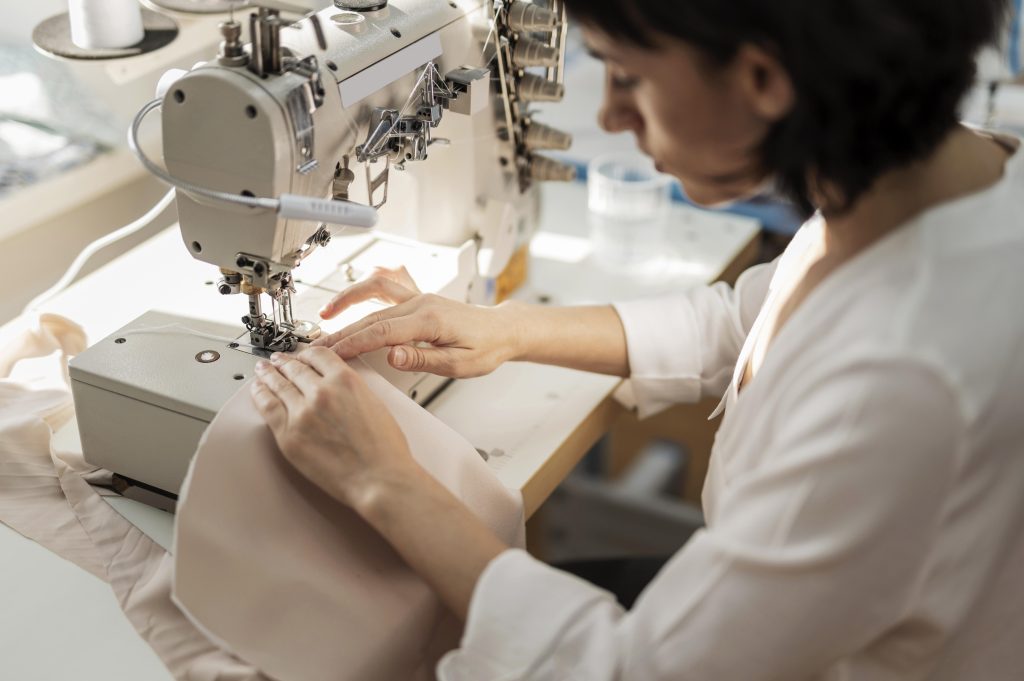
The history of the textile industry is marked by important milestones. Learn about the main ones, in chronicle order:
Textile revolution
The textile revolution began in Great Britain with the development of textile machines, such as Edmund Cartwright’s mechanical loom and James Watt’s steam engine.
These innovations enabled faster and more efficient fabric production, gradually replacing small-scale manual production.
Large-scale production
During the 19th century, the textile industry expanded rapidly, especially in Europe and the United States.
Textile factories began to adopt mass production systems, increasing efficiency and reducing production costs.
Technological advances
The 20th century saw significant advances in textile technology, like the development of synthetic fibers, such as nylon and polyester, revolutioning the industry and offering new possibilities for design and performance.
Automation also played an important role, with more advanced machines and quality control systems.
Industry 4.0
The advent of Industry 4.0 has brought a new era of digitization and connectivity to the textile industry.
Technologies such as the Internet of Things (IoT), Artificial Intelligence (AI), and Big Data are applied to optimize production processes, track quality, and personalize products.
Sustainability has also become a central concern, leading to efforts to develop more eco-friendly production processes and recyclable materials.
Main stages of the textile industry
The main stages of the textile industry are fundamental to the production of fabrics and products.
Here are more details of each stage:
Spinning
The first stage is spinning, where natural fibers, such as cotton, wool, or silk, or synthetic fibers, such as polyester or nylon, are transformed into yarns.
This is generally done through carding and spinning processes, where the fibers are cleaned, aligned, and twisted into yarns.
Weaving
In the weaving stage, the yarns produced in the spinning stage are interlaced to form the fabric.
Done on a loom, where the longitudinal threads (called warp) are stretched and the transverse threads (called weft) are inserted through shuttle movements or other techniques.
Finishing
After weaving, the fabric goes through the finishing process, which includes a series of treatments to improve its physical, aesthetic, and functional properties.
It may involve processes such as washing, dyeing, printing, and waterproof finishing, among others, depending on the type of fabric and the intended end use.
Garment manufacturing
In the garment manufacturing stage, the finished fabric is cut and sewn to create products, such as clothing and accessories.
Done manually or by automated processes, depending on the scale and complexity of the production.
Most used materials in the textile industry

Get to know the main raw materials used in the textile industry below:
Cotton
Cotton, a natural fiber renowned for its gentle touch and breathable properties, has secured its position as one of the most prevalent materials in the textile industry.
The leading cotton-producing countries in the world include China, India, the United States, and Brazil.
Wool
It is at the same time a finer fiber and resistant to water since it has hygroscopic characteristics.
In addition to its pleasant softness, it has properties that protect against UV rays and anti-allergic and therapeutic properties.
Linen
Due to its good adaptability to colder temperatures, much of the world’s linen production is done in European countries such as Poland, Belgium, and the Netherlands.
Of the three most common types of linen, the ideal for obtaining textile fibers is cross linen, the result of the yield of fibers and oils extracted from the plant seed.
Lyocell
It is a synthetic fiber obtained from the extraction of cellulose from trees grown exclusively for this purpose.
Its properties are greater strength, presence of shine, excellent drape, and wrinkle resistance.
Polyester
Polyester fibers are generally water-resistant and highly durable. However, due to the addition of chemicals during processing, the fabric can feel stiff and lack breathability.
It is obtained through the extraction of particles of crude oil or gas and is also used for the manufacture of several items like plastic objects, accessories, and various parts for different niches of the world industry.
Silk
Obtained from the natural fiber of the cocoon of a little animal called “silkworm”, considered the most resistant fiber, being at the same time, very soft.
Silk has a high absorption power, providing a pleasant wearing experience even at high temperatures.
Viscose
Viscose is a fabric known as rayon, the result of the extraction of cellulose fibers that come from the core of some trees, being converted into fine fabric threads.
Even though it is a synthetic fabric, its origin is natural and made from the remains of low-resin wood or cottonseed linter.
Learn more: The best types of fabric for your clothing company
Best equipment for the textile industry
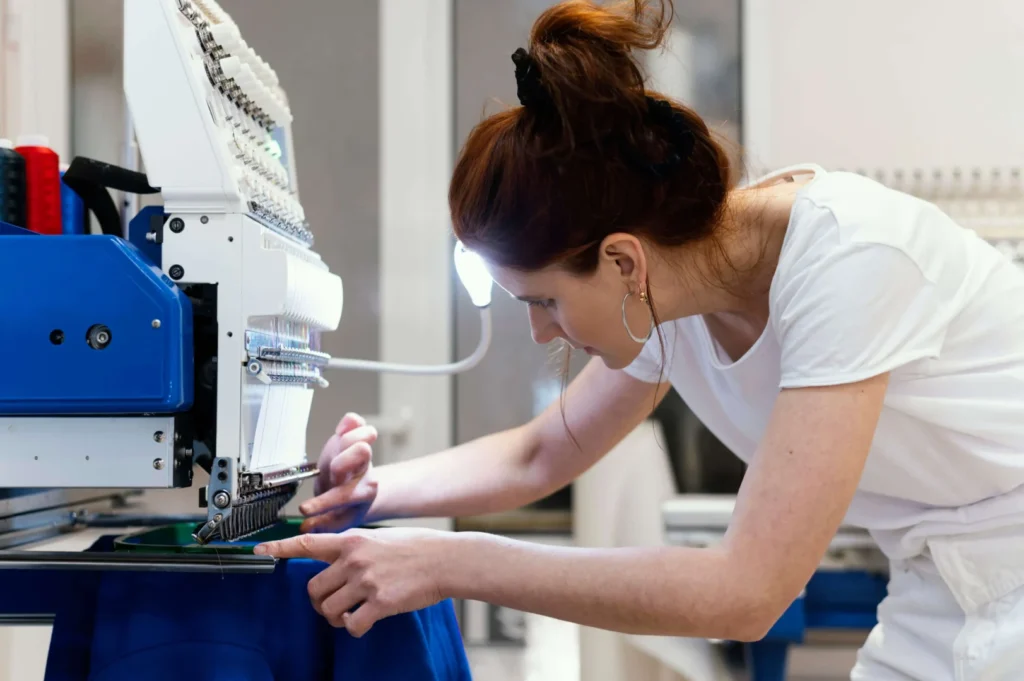
In the textile industry, efficient equipment plays a crucial role in the production process, ensuring efficiency and quality.
Get to know some of the best equipment used:
Pattern digitizer
Allows you to digitize patterns from existing ones, converting them into digital files that can be manipulated and edited in design software.
This facilitates the reproduction and personalization of patterns, as well as the sharing of information between different systems.
Plotter
Used to print patterns on paper or on special materials for cutting fabrics. These printed patterns help to guide the cutting process in a precise and efficient way.
Cutting table
Essential for cutting fabrics precisely and efficiently, ensuring that the pieces have the correct dimensions, and contributing to minimizing material waste.
Spreader machine
Used to unroll and align the fabric in overlapping layers (spreading), preparing it for cutting. This facilitates handling and accuracy during the cutting process.
Spreading table
Provides a flat surface to spread the fabric properly, ensuring that the layers are evenly aligned and ready for cutting.
Take command of the future of fashion with Audaces
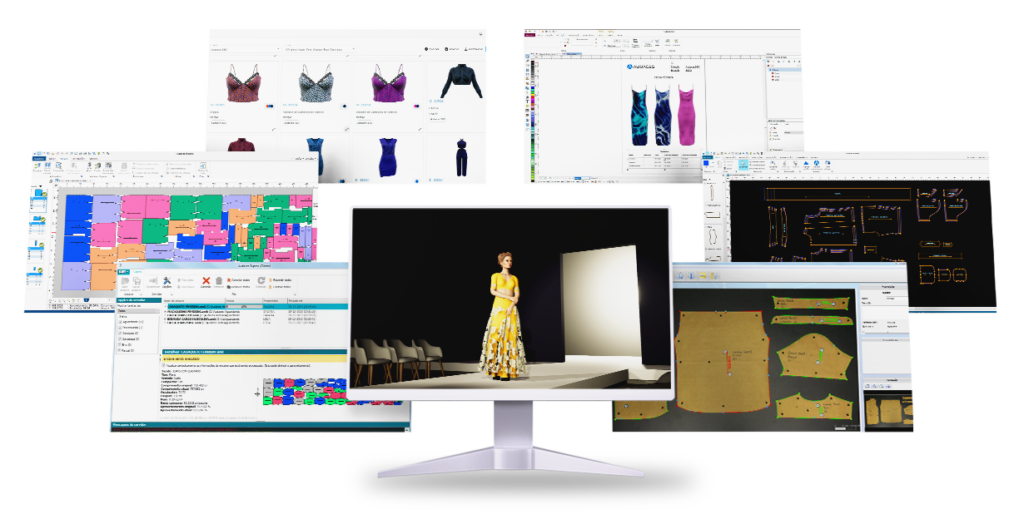
If you are looking for a competitive edge in the fashion industry, technology is crucial at this moment.
Learn more about the Audaces360 multi-solution and the Audaces Cutting Room:
Audaces360
Audaces360 is a comprehensive solution that aims to maximize efficiency and creativity in the fashion industry.
To optimize creative talent and resources, Audaces360 offers a complete platform for companies that face the challenge of balancing assertive design with profitability in production.
Audaces Cutting Room
Audaces Cutting Room is a result of the company’s commitment to integration, efficiency, and productivity in the textile industry.
Developed based on close collaboration with customers and an understanding of daily production needs, this automated cutting room is a clear example of how innovation can be driven by practical experience.
By choosing Audaces as a technology partner, you get access to a team of dedicated specialists to help you make the right decisions and achieve your business goals.
With a clear focus on sustainability, Audaces is committed to offering solutions that drive efficiency, productivity, and long-term success.
Start having a more productive fashion manufacturing today with Audaces! Download our e-book for free:
FAQ
It is responsible for providing employment, influencing culture, and providing access to clothing, while also facing challenges related to sustainability.
Fabrics, clothing, technical fabrics, upholstery fabrics, and shoe fabrics.
In chronicle order: textile revolution, large-scale production, technological advances, and Industry 4.0.


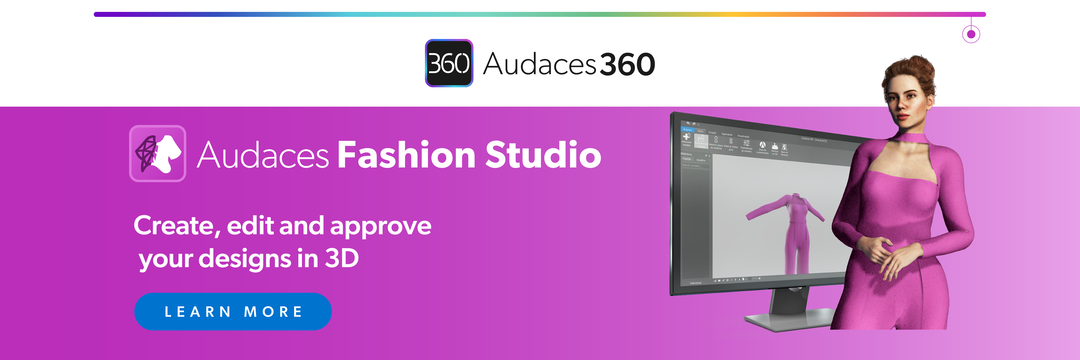

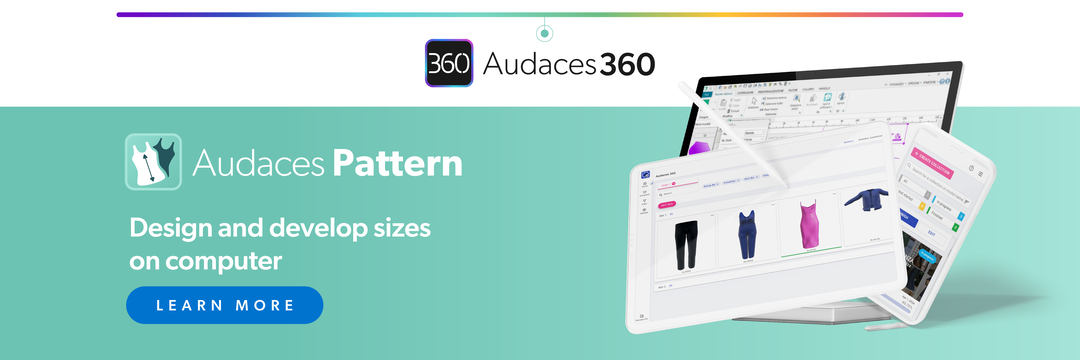
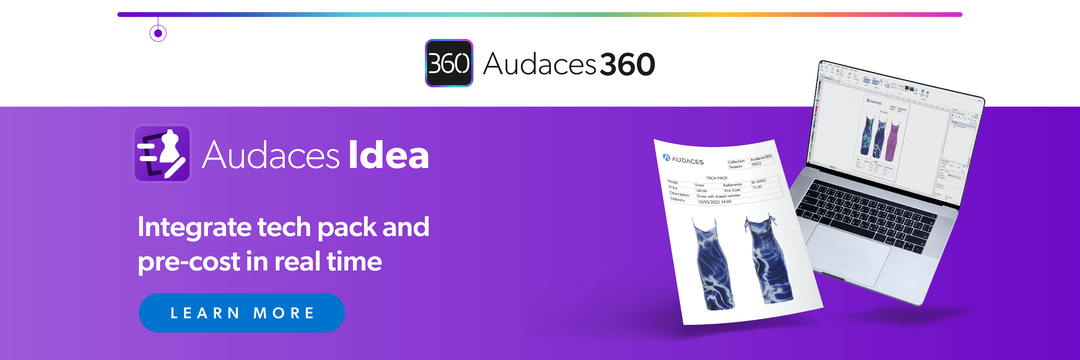
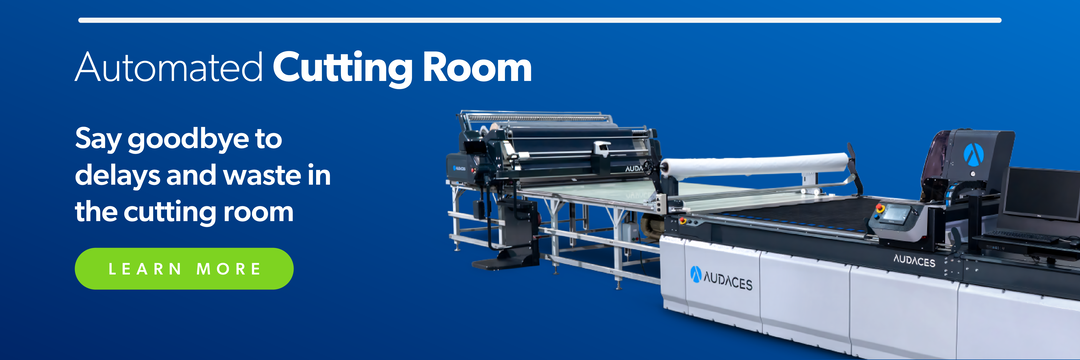

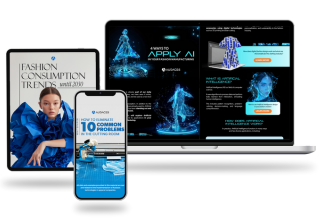


2 Responses
I am interested in working for your company.
Hi,
Thank you for your interest!
We invite you to follow our LinkedIn page for updates on current job openings: https://www.linkedin.com/company/audaces-official/